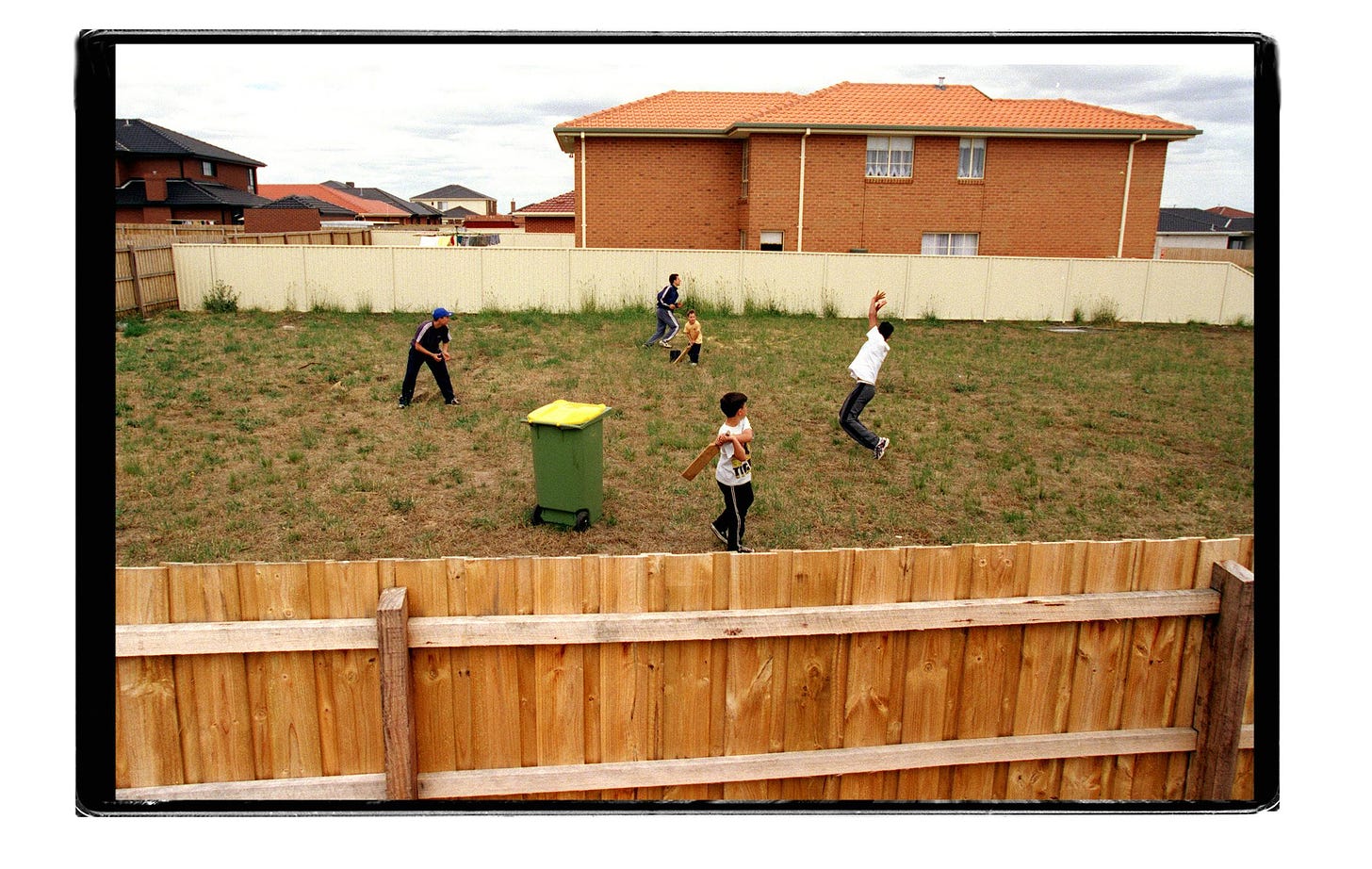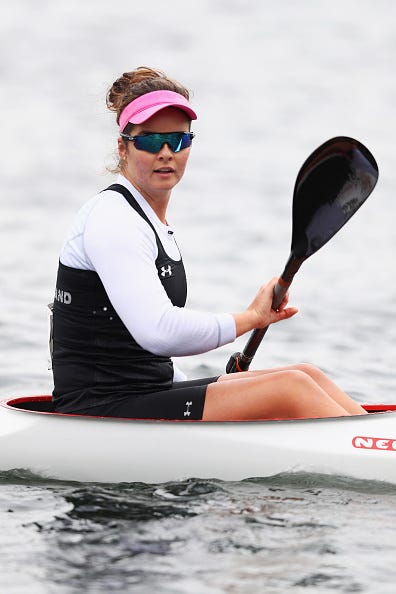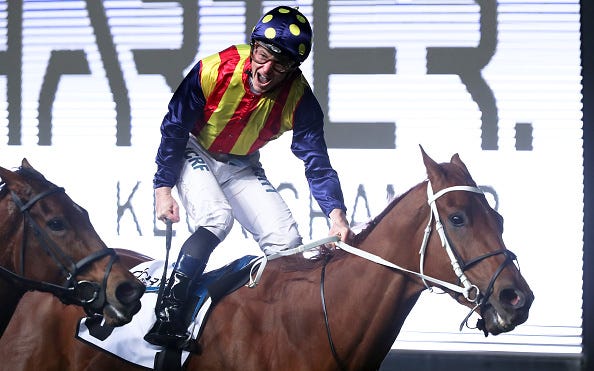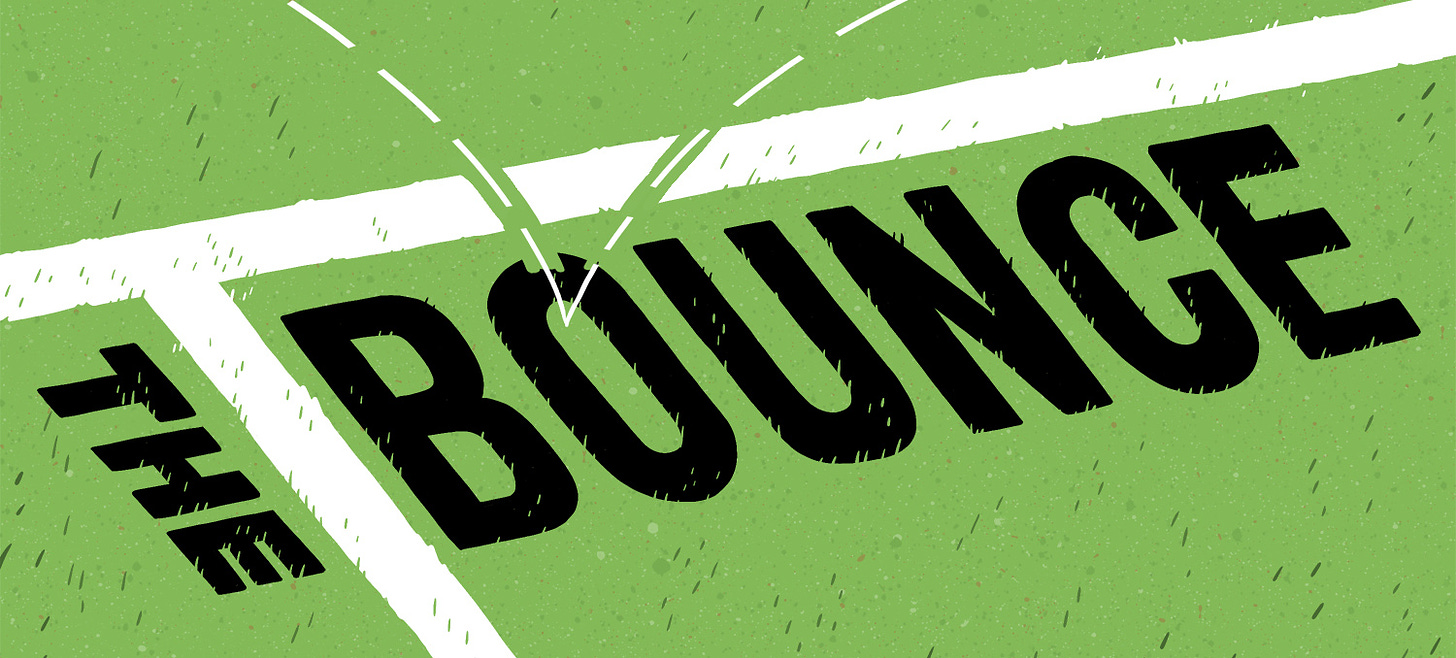XMAS SPECIAL: The unsung sporting heroes
PLUS: A crazy game at the Mount, some BYC silliness and the best Xmas reading this side of a library
Right about now, I hope you’re taping up one side of a tennis ball in preparation for a couple of epic days of backyard cricket with your family. Remember, when you’re bowling and anybody asks, it’s always “two to come”.
Before I dip into a few topics I just want to thank you all for supporting The Bounce. It’s been a steep learning curve since my first post, which was all about ME, on September 6, but it’s also been a lot of fun. There was a lot of trepidation before hitting the “publish” button that first time (and second time, and third time…). There was a lot of internal questioning of my sanity, but in the end the calculus was cliched and simple: I would rather try and fail at something new than not give it a go at all.
Thankfully the good people at Substack have made the mechanics of the transition stress free and now it’s up to me to find enough engaging topics to earn and keep an audience.
A quick note before we get into the meat of the newsletter: I’m hoping to push out two newsletters next week, but there’s a chance it will be just the one. Also, I will be at Bay Oval for the first test on home soil for the Black Caps as world test champions - it still gives me a warm glow to put Black Caps and world champions in the same sentence. I will be putting out the usual newsletters that all those who have signed up can read, but my test-specific cricket coverage will be for paying subscribers.
Merry Xmas, and remember to make it very clear how far the automatic slip cordon extends to before you bowl the first ball tomorrow (and the ball will always swing towards the taped side).
Oh, and here’s my five unsung NZ sporting heroes of the year. It’s far from exhaustive and apologies in advance for not including the person you thought should be on there 😉. (Note: nobody from New Zealand’s major winter sporting codes could qualify for my arbitrary list.)
THE UNSUNG ACHIEVERS
RUTH CROFT
To my mind, she must be near the top of the standings when it comes to New Zealand’s greatest active athlete. The West Coaster is a trail running phenomenon, starting her year by setting a record in the brutal Tarawera Ultramarathon over 102km and ending it with a win at the Festival des Templiers in France.
In between the 32 year old went to the US and took on the iconic Western States. It was Croft’s first time over the course and the first time she had attempted a 100 mile race. With temperatures hitting close to 40-degrees, Croft had to battle to keep her core temperature down while maintaining a nutritional programme of 60 grams of carbs, 800g of sodium and a litre of fluid every hour. Struggling with blisters and in pain for the final 15 miles, Croft crossed the line in 17h 33m 38s and a second place finish. She will be back with a plan to win it.
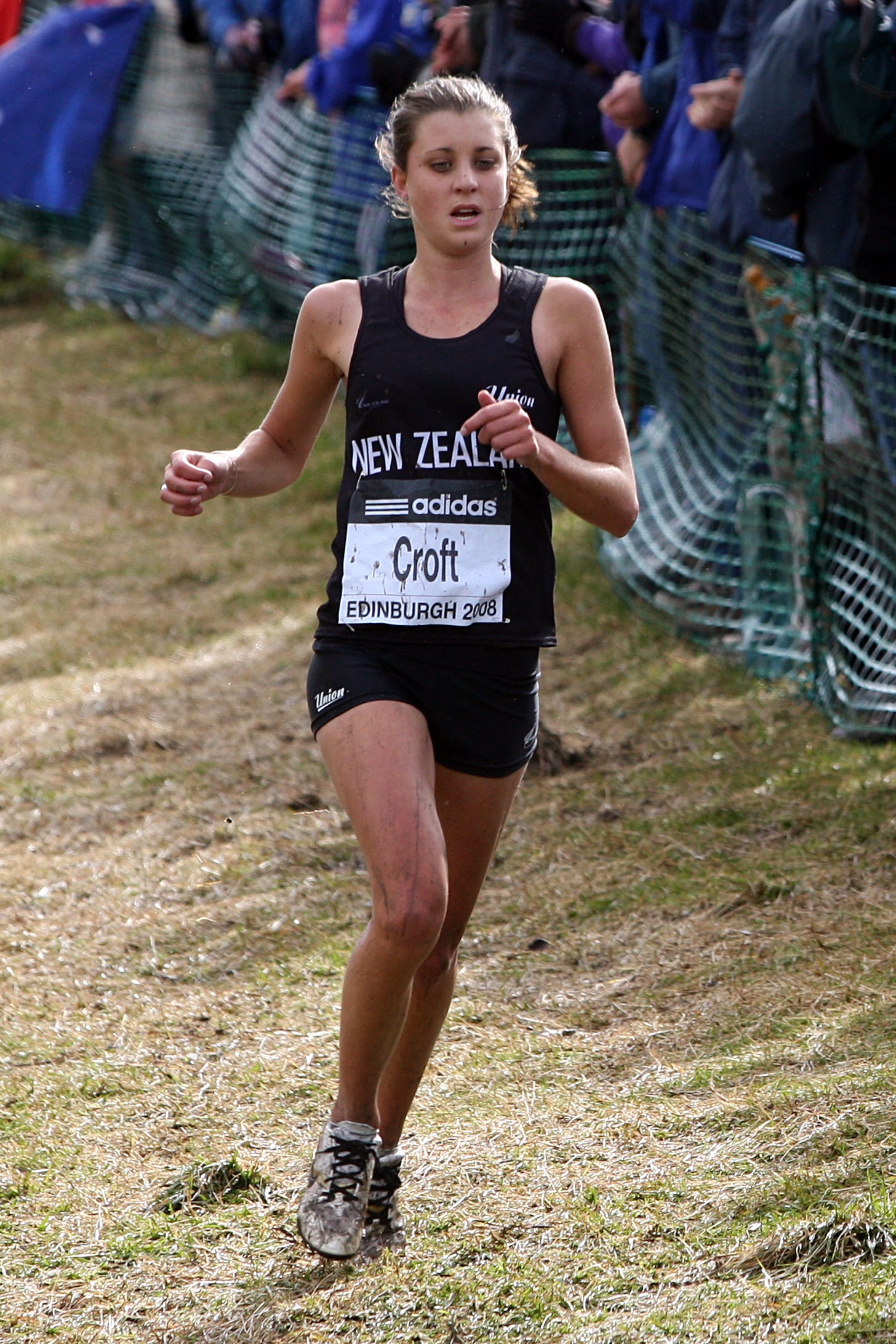
There’s another reason to like Croft: she’s not afraid to call us media types out. She was disappointed that the storyline about her winning the Tarawera in 9h 21m 03s was not her record-breaking feat, but that she also defeated the men’s field.
“Some of the articles were clickbait - ‘a woman beats the men’ - but in hindsight it should be about women racing the women and men racing the men. The women’s events should stand out without having to compare them to the men,” she told the Athletics New Zealand website.
Good point, well made.
PAUL COLL
We are starting to sing about him, and not before time.
Like the runner above him, squash star Coll hails from the West Coast and comes with sporting pedigree - his late uncle Tony Coll was a Kiwis captain and reputedly one of the hardest men to ever pull on a jersey.
The 29 year old has enjoyed an incredible year, becoming the first New Zealand male to win a British Open squash title, one of the sport’s most prestigious tournaments, in the process rising to world No 2 behind Egyptian superstar Ali Farag.
He might have saved his best performance until last, doing what has become almost impossible by winning a tournament in Egypt, the undisputed powerhouse of the sport.
Coll beat Marwan ElShorbagy in the semifinal of the PSA Black Ball Open, then Farag by straight sets in a final that wasn’t even close. Coll became the first non-Egyptian to win a title in that country for four years.
It was his third tournament victory of the year and those who watch him closely say he’s only getting better.
AIMEE FISHER
The kayaker withdrew from the national squad over athlete welfare concerns, but qualified for the world championships in Denmark.
With no other New Zealand crews competing because they prioritised the Tokyo Olympics, Fisher had the floor to herself and capitalised, winning gold in the K1 500m, forcing two Olympic medalists, Tamara Csipes and Emma Jorgensen, into the minor medals.
In the process, the 26 year old Fisher became a poster child for a more individually tailored approach to sport.
Due to New Zealand’s approach to high-performance funding, many Olympic sports had become obsessive about one-size-fits-all “systems” and “programmes”, and while it has proved to be successful if the pursuit of Olympic medals is the only KPI, it has also had a very real effect on the mental health of athletes who like to dance to the beat of their own drum.
Fisher has shown you can do things your own way and be successful. More power to her and her ilk.
GREG HAY
Hay is an anachronism but a wonderful one at that.
A nose-over-the-ball specialist red-ball opener, Hay has never seriously threatened to make the Black Caps, but the 37 year old rolls out season after season for his beloved Central Districts, setting a platform for the flashier types below him.
It’s been a career largely in the long shadows of autumn and spring, where the Plunket Shield is shoved to, but what a career.
In 91 first-class matches - nearly double the amount of List A and T20 matches he’s played combined - the Nelsonian has racked up more than 6000 runs, including 15 centuries, at an average of 42.28. Incidentally, that first-class average is higher than Will Young, Ross Taylor and Henry Nicholls, who will occupy places 3, 4 and 5 in the order against Bangladesh on New Year’s Day.
Cricket is a sport that is often in a rush to promote youth, but long may Hay occupy the crease.
JAMES McDONALD
Not sure if you can call a guy who has ridden more than 1200 career winners, including more than 50 Group One races, unsung, but then again I’m also not sure many New Zealanders appreciate just how seriously good McDonald is.
While there’s a certain truth to the idea that a jockey is only as good as the animal beneath him or her, there’s a reason a select few are so coveted by the best trainers.
ALL THAT JAZZ
There were plenty of people singing the praises of Ajaz Patel following his extraordinary feat at Wankhede Stadium, but the song stopped awfully quickly.
Patel is now in a club of one, becoming the first man to be dropped immediately after taking 10 wickets in a test innings - beat that, Anil Kumble and Jim Laker.
It was a relatively predictable outcome, given he has played three tests on home soil and not taken a wicket. He might look askance at the continued opportunities handed to Canterbury paceman Matt Henry, however, who has played seven tests in seam-friendly home conditions and is averaging 53 for his 13 wickets.
The other slight eyebrow raise is the fact that if anywhere in New Zealand promotes spin it is Bay Oval, where Mitchell Santner secured a dramatic victory with time ticking away against Pakistan last summer. The selectors clearly see young Rachin Ravindra as a red-ball version of Santner with a higher ceiling than the Northern Districts man and feel that carrying a specialist spinner with limited batting skills as a luxury.
That is anathema to some but it has to be said that under selector-coach Gary Stead, New Zealand has an incredible home record and the seamers will undoubtedly hold the keys to victory.
I did like this quote from Patel, however, about the need for New Zealand to promote a range of conditions in domestic cricket.
“In domestic cricket there’s space for groundsmen to experiment a bit. It only helps us grow as players as well – one, from a bowling aspect, understanding how to bowl on those surfaces, but also from a batting perspective, learning how to cope with conditions that are different.”
Amen to that.
MADNESS AT BAY OVAL
The Super Smash match between Northern Districts and Canterbury at Mt Maunganui last night was objectively one of the worst games of professional cricket I’ve witnessed. It was captivatingly dreadful and ND did their utmost to sabotage themselves, needing six to win off the final ball chasing a miserable 108 to win.
Then this happened.

On this week’s BYC, absent our captain Jason Hoyte, Paul Ford and I forensically dissect the Ashes, the Super Smash and declare a News or Ruse 2021 winner.
XMAS READING
Mike White has gone deep into the deaths of two of New Zealand’s best young climbers and the controversy and distrust it created in New Zealand’s small, loosely knit climbing community. It’s a long read and well worth it, even if you’re left with the same questions you started with. As a disclaimer, I looked very closely at this story myself back in my NZ Herald days, particularly at the culture of the New Zealand Alpine Team. I wanted to tell the story from the perspective of Sarwan Chand’s family, but they politely declined. At the time I often thought about the sheer terror Chand must have felt in those seconds from when he realised his lead climber, Conor Smith, had fallen and that it was inevitable he would then take him with him to the bottom of Marian Peak.
I’m always a bit leery of GQ profiles because I hate the staged fashion photos, but this one on Milwaukee Bucks’ Greek Freak Giannis Antetokounmpo is worth a read. And, yes, I still hate the photos.
I enjoyed this piece from the BBC about Frank Mill, a man famous for the worst miss in Bundesliga history.
The BBC has put out an impressive range of sports features recently, including the tragic death of American cyclist Kelly Catlin (warning: this links to a story that deals with suicide), and football fans will love this dramatic retelling of the brutal European Cup match between Red Star Belgrade and AC Milan, a match which for horrific reasons moulded the latter into one of the greatest club sides that ever played the game. That was an awesome Red Star side that included Dragan Stojkovic, Robert Prosinecki, Dejan Savicevic and Darko Pancev. These days there’s no way a team from a small league would be able to accumulate and keep such talent before the big clubs raided them but this was a different time. If you want to go down a Yugoslav football rabbithole, as I did, this blog takes a comprehensive look at the rise and fall of Red Star Belgrade and Yugoslav football.
Not just because he’s said kind words about me this week, but if you haven’t already you should check out Rich Irvine’s Sport Review Substack. He looks at sport a lot differently to the rest of us and it’s always a good fun end to the week.
MIDWEEK BOOK CLUB
What is it? You Gotta Have Wa
Who wrote it? Robert Whiting
Publisher: Vintage Books (1989 and 2009)
Genre: Sports and cultural history
Reviewer: Dylan Cleaver
Met a couple of likely lads recently for a couple of Christmas cleansers and one of them brought this book along. I took it home. Wow! How have I not heard of this before?
This is an updated version of the book first published in 1989 and it is a stunning meditation on not only Japanese baseball, but the east-west culture clashes that are magnified by their approach to the sport.
I know, I know, I’m not really selling it to an audience that probably has a passing interest only in baseball, but it is genuinely enlightening and often hilarious.
Take this passage when the author recounts an interpreter trying to walk a tightrope between getting the message of an American player across while also achieving the most crucial Japanese art of saving face.
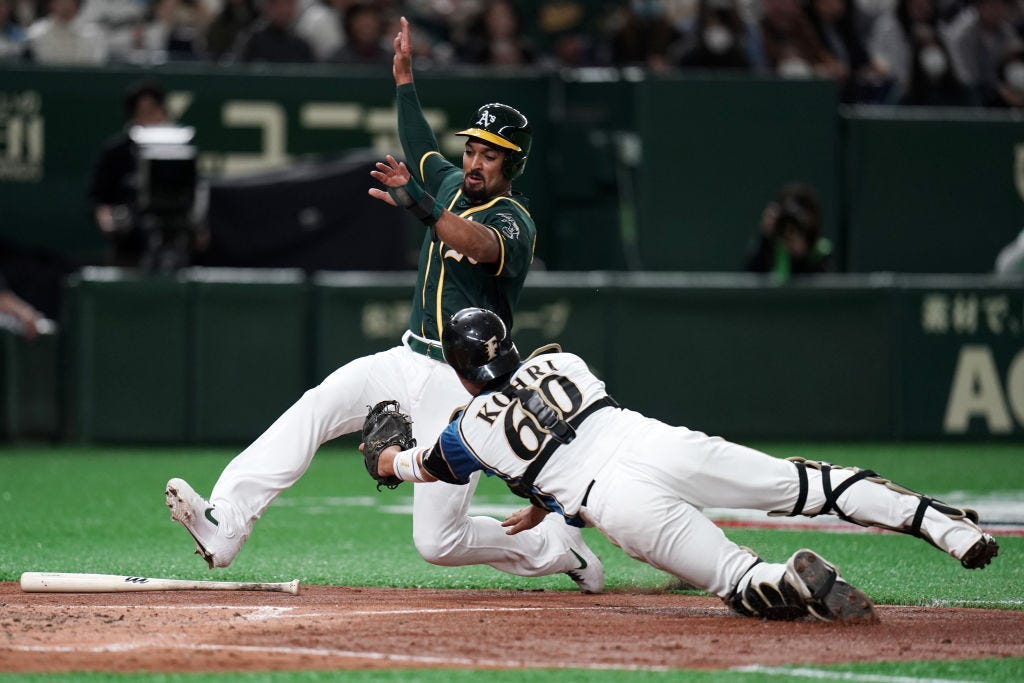
Tony Solaita, an American Samoan who played for the Nippon Ham Fighters (yes, that’s a real team name), was tired of getting pitches thrown close to his head during a series against the Lotte Orions. He took the team’s interpreter, a Mr Shimada, to confront the Lotte catcher during the pre-game practice.
“Listen you no-good son of a bitch,” said Solaita, who was built like a Brinks armored truck and had a temper to match, “if you have a pitcher throw at my head again I’ll fucking kill you.”
Shimada did not bat an eyelid as he translated: “Mr Solaita asks that you please not throw at his head anymore. It makes his wife and children worry.”
That catcher flashed an appropriate look of concern. He then bowed slightly, then… promised that such a terrible thing would never happen again.
The book examines at the history of baseball - besuboru - in Japan, but does so with a focus on the challenges faced by American players in the Nippon Baseball League who are not used to the militaristic and ritualistic dedication to training.
It’s not flawless, the introduction of a vast array of characters can be overwhelming, but it’s right up there as one of the most entertaining sports reads I’ve chanced across.




